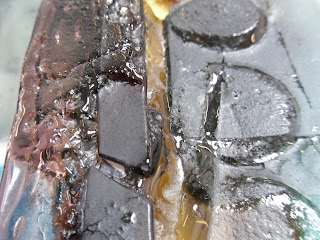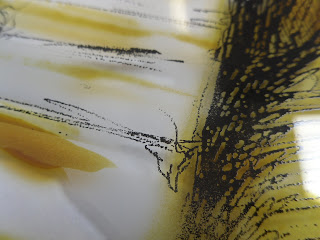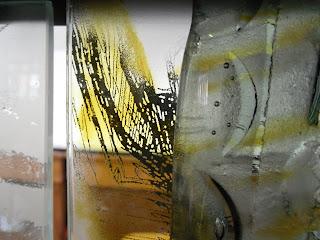I love to screen-print :) as you may have worked out, and I thought I would screen-print some of my drawings I had done of decaying things, like eroded bark, rusted metal bolts and peeling paint.
Really like the two colours together, and the depth that is created through the layering. The next step I wanted to try was to laminate smashed glass with UV bonding rather than resin. The piece below shows my first attempt at this, and immediately after I had done this I absolutely hated it!
I hold the opinion that glass always looks better after it has been sandblasted- it is something I have always thought ever since first year. So I decided to sandblast it and wayhey- an improvement! Still was not overly fussed but it seemed to attract a lot of attention from passers by when it was sitting on my desk so that says something!
After achieving a sense of some progress, I went back to my initial screen-printed pieces and added a third layer in between the other two, and this was a smashed layer. It varied throughout the test pieces whether the smashed layer consisted of black screen-printed glass, silver stain screen-printed glass or clear float glass.
In some cases too I also tried adding pieces of bark to the smashed layer- aiming to trap the bark on the inside with the smashed pieces:
Sticking to my guns, I headed to the sandblaster and focused mainly on sandblasting the edges and corners of the pieces relatively deeply to create an 'eroded' effect. I didn't want to sandblast any of the front or back really, as the detail of the inside layers would not then be visible.
The pieces after sandblasting:
Really really happy with the results of these test pieces- I really feel as though they are capturing the textures that I was aiming to capture all along :)
























































































